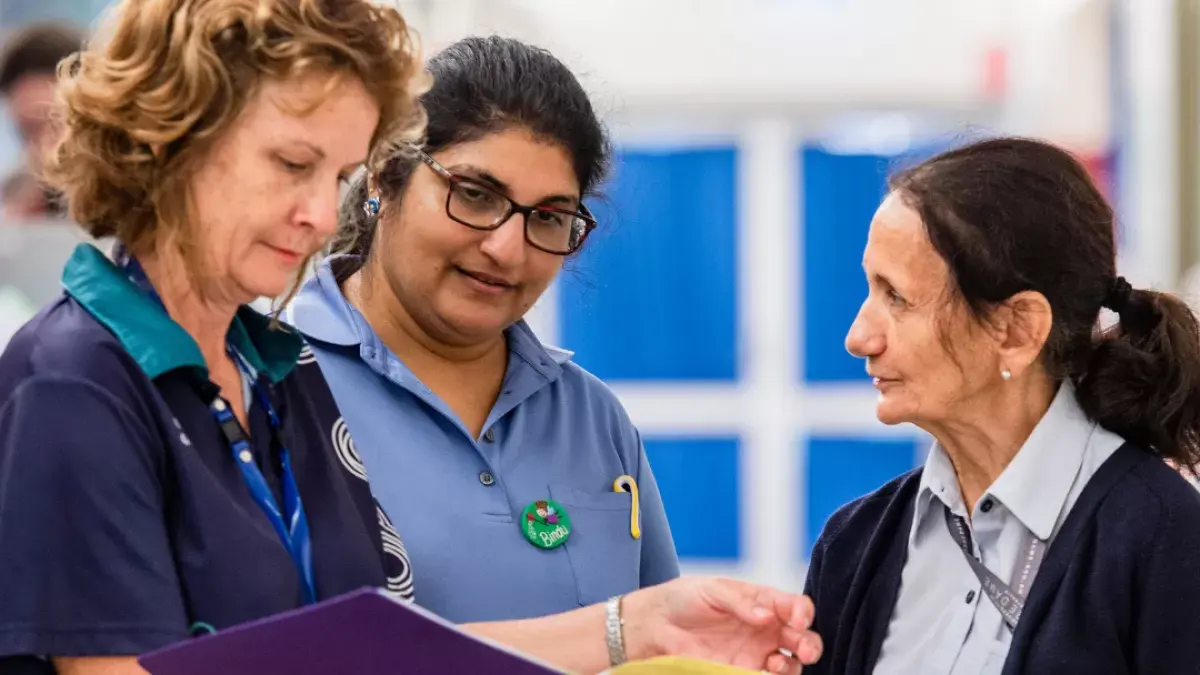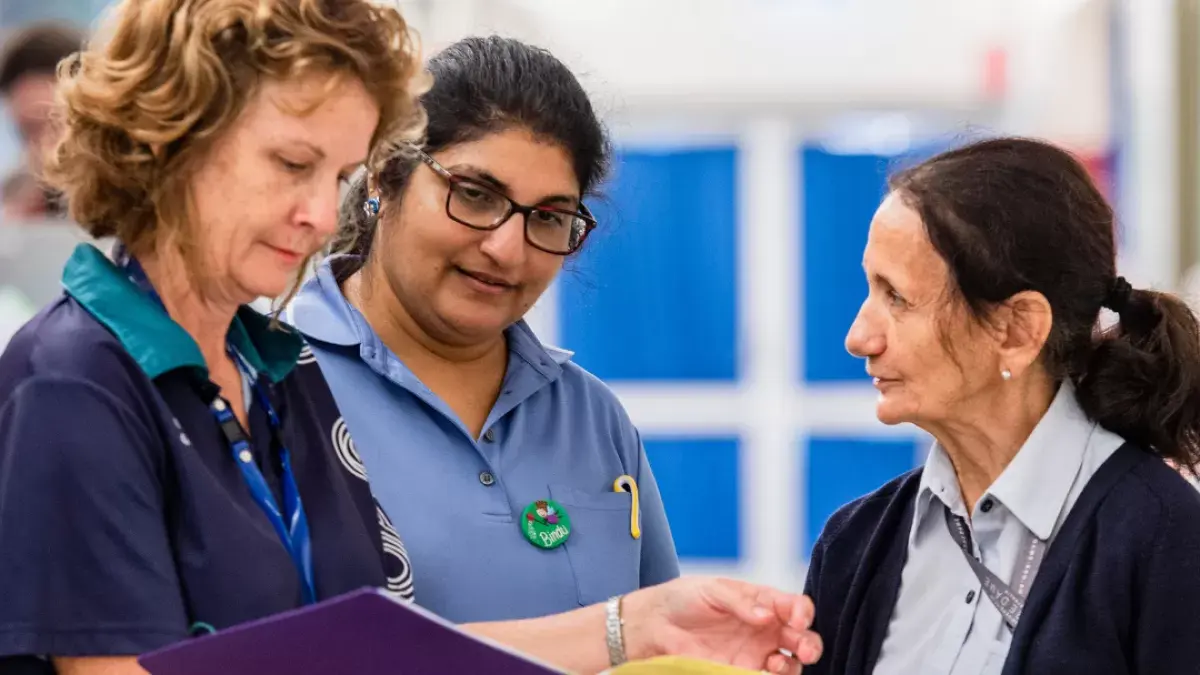What will the Australian healthcare workforce look like in 5-10 years?
Australian healthcare is on the cusp of transformation. In 5-10 years’ time, we hope to see a future workforce that's agile, adaptable, and efficiently leverages technology to deliver exceptional patient care. But what exactly does this future hold? Let's delve into some key trends that will shape our healthcare workforce.
Goodbye, 9-to-5. Hello, flexible schedules.
The traditional workweek is on its way out. We'll see a rise in flexible work arrangements, with shorter shifts (think 3-4 hours) becoming commonplace in primary care. This model, already piloted in virtual emergency departments with great success, empowers healthcare professionals, particularly parents, to achieve a healthy work-life balance.
Rethinking training and career plans
Linear career paths in healthcare will become a relic of the past. The future demands adaptability and continuous learning. Training programs will need to be more flexible and cater to diverse learning styles. Additionally, we need to dismantle the ‘ceiling effect’ that traps nurses and other professionals in entry-level, on-the-floor roles. Upskilling and reskilling opportunities will be crucial to career progression.
The evolution of specialisation
Artificial intelligence (AI) will undoubtedly impact the healthcare workforce. While some specialties like dermatology and radiology might see a shift towards AI-assisted diagnosis, the human touch will remain irreplaceable across the healthcare spectrum. Future clinicians are likely to move towards specialisations rather than general medicine - even GPs will likely need to specialise due to the ever-growing volume of medical information. However, in rural and remote areas, generalists will remain crucial.
Considering the patient experience
Despite AI's rise, the human element in healthcare will never be expendable. Building trust and rapport with patients is a cornerstone of good care. Technology can augment healthcare, but it cannot replace the human connection and empathy that clinicians provide. The patient will further benefit from a single source of truth for clinical information across primary and secondary care. Imagine a seamless exchange of patient records, eliminating duplication and ensuring a more holistic approach to care.
Harnessing the virtual
Virtual consultations will no longer be seen as an innovation, but rather a fundamental pillar of the healthcare system. Imagine rural Australians accessing quality care on weekends or after-hours through virtual consultations. This would not only improve access to healthcare but also alleviate the burden on rural doctors, freeing them from the 24/7 on-call grind.
Building whole career pathways in the bush
Imagine medical schools partnering with rural communities. This would create training opportunities for aspiring healthcare professionals while fostering a sense of connection to rural practice. While returning to major cities after graduation for specialty training might be inevitable now, with the right structures in place, doctors would be able to complete their training out of the city, planting roots in regional towns. This will resolve the need to lure doctors, who started families and relationships and developed ties in the few years completing training in the city, back to rural locations where they’re in demand.
But to tempt doctors to relocate, we need to go beyond just offering jobs. Healthcare professionals deserve a support network that includes affordable housing, work opportunities for partners, childcare options, generous leave policies to stay connected with home, and ongoing opportunities for professional development.
Knowledge is power for patients
The future demands a healthcare system that prioritises patient education. By equipping patients with the knowledge and tools they need to make informed decisions about their health, we empower them to become active participants in their own wellbeing.
Finding time
Doctors, especially in primary care, often find themselves under immense pressure, with little time allocated to each patient. The future envisions a shift towards a more patient-centred approach, giving doctors the time they need to build rapport and deliver quality care.
The road to 2040 holds exciting possibilities for the Australian healthcare workforce. By embracing flexibility, technology, and a patient-centric approach, we can build a future where healthcare professionals feel valued throughout their career, patients receive exceptional care, and everyone thrives.
Related Articles
-
 Sep 27
Sep 27AI in Aussie Healthcare: Friend or Foe?
AI is reshaping healthcare, promising improved diagnoses, treatments and patient experiences. However, it has benefits and drawbacks to be considered.
- News
- Medical Careers
- Trends
- Admin
- 5 min read
-
 Sep 27
Sep 27New fast-track process to get more medical specialists to Australia
The Medical Board of Australia is implementing a new fast-track registration pathway to integrate internationally trained medical specialists into the Australian healthcare system.
- News
- Medical Careers
- Admin
- 5 min read
-
 Sep 27
Sep 27Embrace the challenge, enjoy the flexibility
The Medical Board of Australia is implementing a new fast-track registration pathway to integrate internationally trained medical specialists into the Australian healthcare system.
- News
- Medical Careers
- Admin
- 6 min read
Related Programs
-
 Sep 27
Sep 27AI in Aussie Healthcare: Friend or Foe?
AI is reshaping healthcare, promising improved diagnoses, treatments and patient experiences. However, it has benefits and drawbacks to be considered.
- News
- Medical Careers
- Trends
- Admin
- 5 min read
-
 Sep 27
Sep 27New fast-track process to get more medical specialists to Australia
The Medical Board of Australia is implementing a new fast-track registration pathway to integrate internationally trained medical specialists into the Australian healthcare system.
- News
- Medical Careers
- Admin
- 5 min read
-
 Sep 27
Sep 27Embrace the challenge, enjoy the flexibility
The Medical Board of Australia is implementing a new fast-track registration pathway to integrate internationally trained medical specialists into the Australian healthcare system.
- News
- Medical Careers
- Admin
- 6 min read

